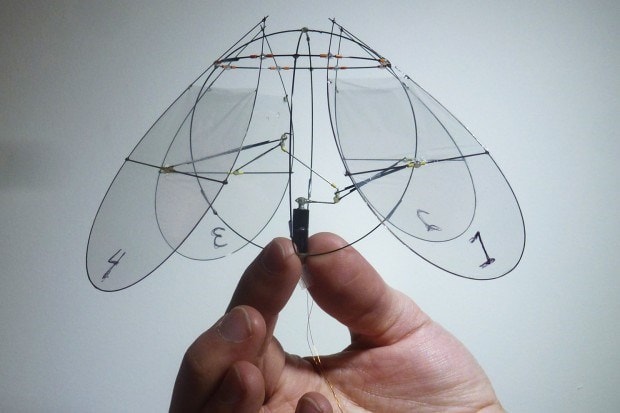Successfully manufactured a jellyfish-like flying device
American scientists have just announced that they have successfully created the world's first "jellyfish-style aircraft".
With a compact size and a weight of only 2.1 grams, this object can fly and move in the same way as a jellyfish swimming in water. This invention was published in the British scientific journal Royal Society Interface on January 14.
 |
| Jellyfish-style flying device model. (Source: dpa) |
Leif Ristroph, one of the two scientists who co-led the study with Stephen Childress of New York University's Applied Mathematics Laboratory, said they were initially interested in creating a "robotic insect" that could replace helicopters, but the result was quite unusual when the chosen animal was a jellyfish.
Engineers have long been drawn to jellyfish because of their simple yet effective movements. Over millions of years of evolution, jellyfish require only simple muscles and a rudimentary nervous system. Their bodies resemble transparent dome-shaped “suits” that can be rolled up and then closed, forcing water out through tiny holes and allowing them to move.
In this study, the drone used four petal-shaped propellers, each 8cm long, which when folded together form an inverted cone. A tiny motor, attached to a crank, makes the blades move up and down up to 20 times a second, pushing air through the bottom of the "cone."
With this design, scientists have created a "bird-wing aircraft" that can fly with high stability, without the need for frequent or costly adjustments. It can also change its direction by making one of its four wings work more than the others.
The materials are also fairly easy to find, including thin sheets of lightweight carbon fiber to house the motor and frame the blades. The blades are covered with a transparent Mylar film.
Ristoph said he and his colleague Childress were inspired by footage of early 20th-century aviation pioneers who attempted to create an "ornithopter" that mimicked the flight of insects, but lacked the knowledge or materials to do so at the time.
New York University is preparing to apply for a patent for this invention. The next step for scientists is to create batteries and remote control.
Ristoph hopes the machine can be used for military purposes such as spy flights, or for civilian purposes such as measuring air pollution. He plans to name the device AeroJelly./.
According to VNA






